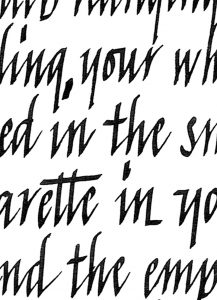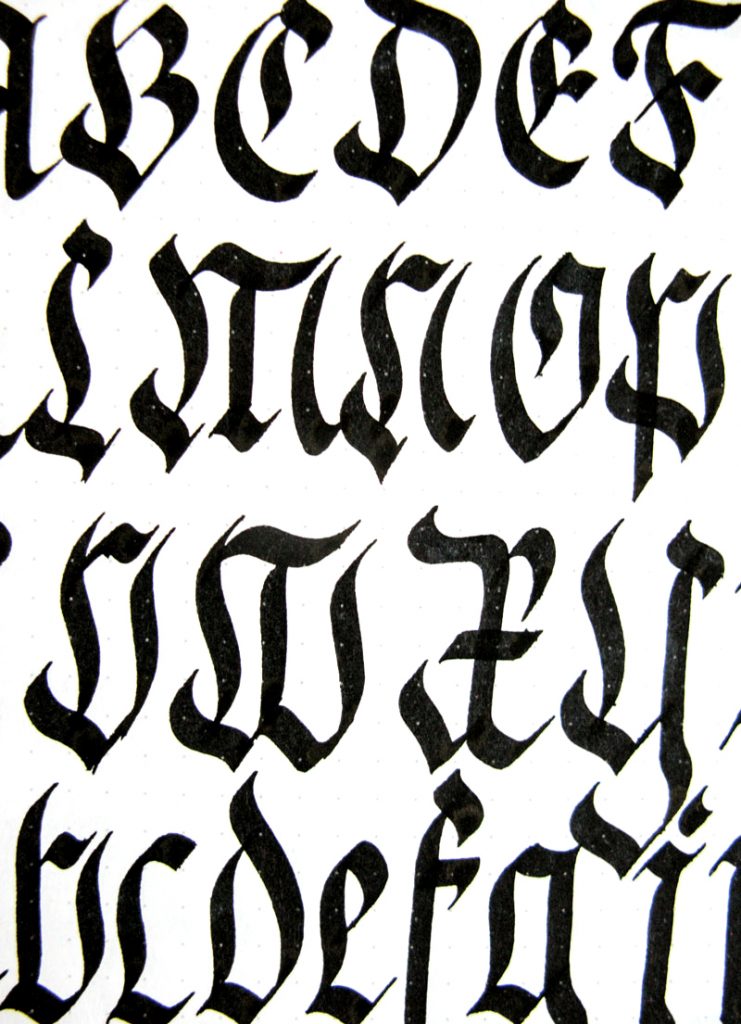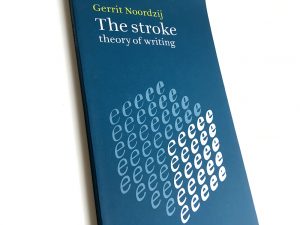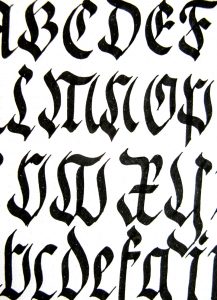
Gerardus ‘The Rebel’ Mercator
I learned writing italic through the manual of Mercator, which, still today, serves as a good base to teach my students.

… seems to be burdened by the meaning of the word calligraphy: ‘beautiful writing’.
Tell me, what is ‘beautiful’?
Honestly, I always feel a bit embarrassed to call myself a calligrapher because of its frumpy identity. Books about calligraphy are usually placed in the handicraft department of bookstores. Amateurs want to make ‘beautiful’ Christmas cards.
Professional calligraphers misunderstand beauty by perfection. I recognize that pitfall. That is why I follow the Japanese principle ‘wabi-sabi’: nothing is forever, nothing is finished, nothing is perfect. It is about the beauty of imperfection.
Before calligraphy became an art, it was a necessity. There were no typefaces you could choose from and print out your text. So if you needed something legible, you would ask a ‘penman’.
His profession was first of all functional. Of course, he tried to make it look as nice as possible, but beauty was a result, not a goal.
Whatever script he wrote was a sign of the times he was living in. A time that was shaped by society’s fashion and culture.
When lead letters took over the pen, the penmen lost their jobs. Their profession became a luxurious skill. The purpose and context changed, with all its consequences.
Penmanship became calligraphy.
The similarity between the two is that it takes a lot of practice. You practice to become better and yes, practice makes perfect, but perfect makes boredom.
That is why my greatest inspiration is Edward Johnston. He didn’t write perfect letters, but his writing is full of charm and spirit.
A good hand has flow and character. As Master Gerrit Noordzij puts it: ‘You should write a nice row of letters, instead of a row of nice letters’.
Share this post

I learned writing italic through the manual of Mercator, which, still today, serves as a good base to teach my students.

A letter is not any different from a stain. It is making a shape and a counter shape.

Honestly, I always feel a bit embarrassed to call myself a calligrapher because of its frumpy identity.